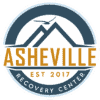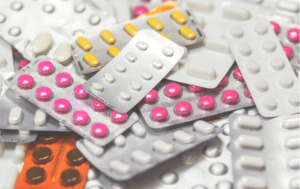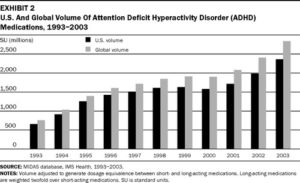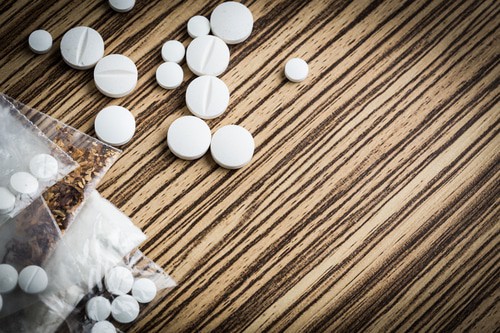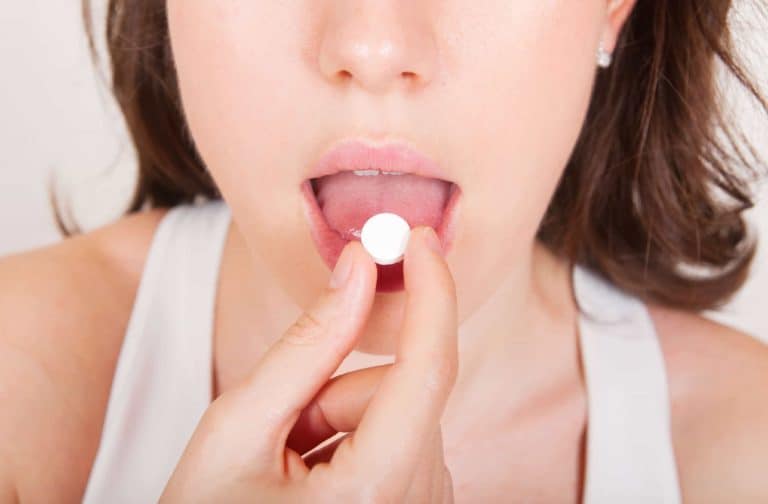History of Ritalin
Ritalin, clinically known as methylphenidate, is a stimulant commonly prescribed for ADHD and narcolepsy disorders. The drug was first synthesized in 1944 by chemist Leandro Panizzon who named the drug after his wife Rita. By 1955, Ritalin was identified as a stimulant and approved for medical use in the United States. Prescriptions of this drug rose significantly in the 1990s, as ADHD came to be better understood and more generally accepted by the public and medical communities. In the United States, Ritalin has been classified as a schedule II controlled substance due to its high potential for abuse. Today, it is the 45th-most commonly prescribed medication in the United States, with more than 16 million prescriptions nationwide.
The Ritalin High
Ritalin is typically taken orally but can also be snorted. Ritalin produces a high in which the user experiences:
Increased energy
Anxiety
Increased focus
Insomnia
Loss of appetite
Dizziness
Nausea
Headache
Side Effects of Ritalin Abuse
Long-term Ritalin abuse can cause lasting effects and irreversible damage. Such side effects include:
High blood pressure
Stroke
Heart arythmia
Bipolar disorder (rare)
Seizures
Heart disease
Ritalin Use in the United States
There is a long-standing debate within the medical community in regards to the effectiveness of Ritalin as a treatment for ADHD. Although the case volumes of ADHD and narcolepsy are virtually the same worldwide, many critics question why the U.S. has vastly surpassed other nations in Ritalin prescription, especially when the drug poses risks such as dependency and addiction. According to the United Nations, the U.S. produces and consumes about 85 percent of the world’s methylphenidate. The IMS Health graph below depicts this disproportion.
Ritalin Addiction Treatment
Ritalin is highly addictive and life-threatening when abused; therefore, it is extremely important to seek help immediately if you or a loved one is struggling with this addiction. At Asheville Recovery Center, treatment specialists utilize a 12-step program and practice holistic rehabilitation.
Services at the center include:
Partial Hospitalization Program – At Asheville Recovery Center we offer a partial hospitalization program for clients who need post-residential treatment as well as for clients who need primary treatment but are unable to enroll in inpatient programs. Our PHP track offers a variety of therapeutic services and benefits to individuals in early recovery from substance addiction. Our day program is full-time, offering all of the clinical hours provided in residential treatment (from 9 am to 5 pm) with the benefit of allowing clients to return home to a structured sober living environment at night. This gives individuals the opportunity to build a community of peers and practice life skills, such as cooking, cleaning, and self-care, while still participating in immersive and intensive clinical addiction and trauma treatment.
Outpatient Rehabilitation – During intensive outpatient treatment, clients live at home or in a sober living residence which can help keep them accountable for their recovery commitment. Our staff coordinates with local, reputable sober living homes to ensure that our clients are living in a safe place and that their needs are being met, even when they are not at clinical sessions. During this time, clients are also encouraged to become involved in local twelve-step fellowships, to find sponsors, and to begin working the steps of recovery through participation in these groups. IOP is a place where clients can process their experiences in twelve-step fellowships and support one another in those individual journeys.
Addiction is difficult to overcome alone. If you feel that you or a loved one is struggling with Ritalin abuse, our specialists are on standby and ready to help. Call (828)383-0784 and speak with an addiction expert today.
